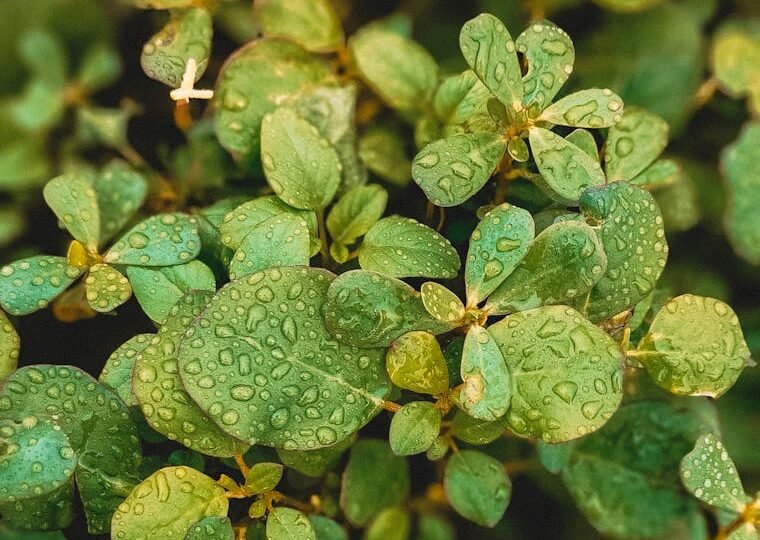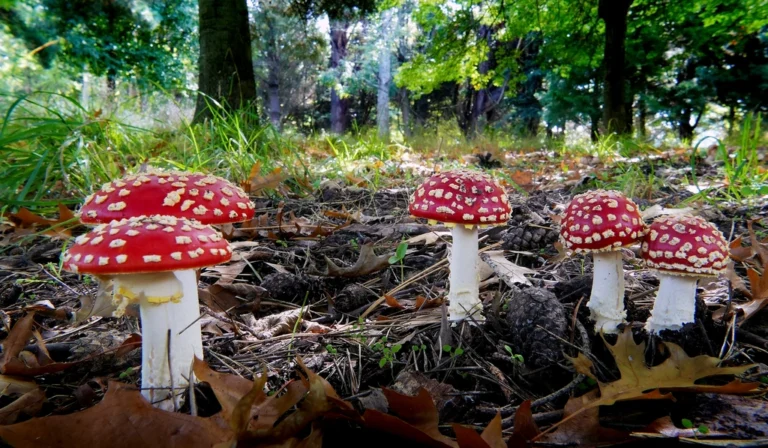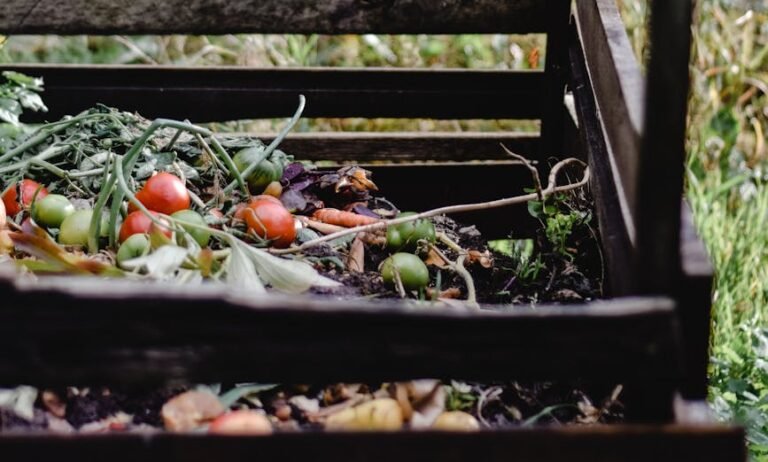A curious thing happens when you learn to see what was always there. Walking through any neighborhood, you may find a plant that contains more omega-3s than most fish. It also has more healing compounds than expensive supplements. This plant offers more nutritional density than many superfoods. Yet most people spend energy trying to eliminate it from their lives.
This phenomenon with purslane (Portulaca oleracea) reveals something deeper about how we’ve been conditioned to perceive value and scarcity. It raises profound questions about the nature of abundance itself.
The Architecture of Inverted Perception
Consider this: we live in a culture that teaches us to overlook free, abundant resources while pursuing expensive, processed alternatives. The same economic systems promised to optimize human nutrition. Instead, they have created a world where we pay premium prices for isolated nutrients. We treat their naturally occurring forms as waste.
Purslane is what systems thinkers call a “hidden leverage point.” It is a place where small shifts in understanding can create profound changes across multiple domains. For over 4,000 years, this humble succulent sustained civilizations. It has been studied for space missions due to its remarkable resilience and nutrition density. Yet in our modern context, it’s primarily seen as something to be eliminated.
This inversion: solutions becoming problems, abundance becoming scarcity; illuminates a fundamental pattern. It shows how complex systems can drift away from their original purpose. When we learn to recognize value in what we’ve been taught to discard, we start to see similar patterns everywhere. We notice them in relationships we’ve neglected. We find them in skills we’ve undervalued. They are visible in aspects of ourselves we’ve suppressed.

The Stress-Wisdom Principle
To come to know purslane, one must grasp a fundamental principle of natural systems. Organisms that thrive under stress often develop compounds that help other organisms adapt to their own challenges. Purslane’s ability to flourish in concrete cracks, desert conditions, and disturbed soils is remarkable. It serves as the mechanism that creates its extraordinary nutritional profile.
This succulent concentrates nutrients as a survival strategy. When resources are scarce and conditions harsh, the plant responds by producing higher levels of protective compounds. It increases antioxidants, and essential fatty acids. These same compounds, when consumed by humans, provide similar protective benefits for our cellular systems.
This exemplifies what researchers call “antifragility”: the property of systems that become stronger under stress rather than merely surviving it. Modern humans, living in controlled environments and consuming processed foods, have lost touch with this adaptive capacity. Purslane offers a pathway back to what we can call “nutritional antifragility.”
The philosophical implications are significant. Our approach to wellness has been fundamentally backwards. Instead of seeking to eliminate all challenges. We can benefit from engaging with the wisdom that emerges from organisms that have learned to transform adversity into strength.
Nine Systemic Rebalancing Effects
The Convergence of Traditional Knowing and Modern Validation
Rather than viewing purslane’s effects as separate health benefits, it’s more accurate to understand them as emergent properties of whole-system optimization. Each effect represents a facet of deeper systemic rebalancing. Thus, revealing how traditional wisdom and contemporary research converge in their recognition of interconnected healing mechanisms.
When we examine these nine validated effects, we do not find a collection of isolated benefits. Instead, we see a coherent pattern of systemic restoration. Each effect highlights a different aspect of how natural systems optimize themselves. It offers insights into our own capacity for regenerative health.
Omega-3 Networks and Inflammatory Communication
Purslane contains the highest concentration of omega-3 alpha-linolenic acid of any leafy green, comparable to many fish oil supplements. Yet this isn’t merely about nutrient replacement. It reveals inflammation as a communication system that has lost its capacity for appropriate response.
Chronic inflammation shows miscommunication at the cellular level, an immune system unable to distinguish between genuine threats and normal processes. The omega-3s in purslane don’t simply suppress inflammation. They help restore signal clarity, allowing appropriate rather than reactive responses throughout cardiovascular, neurological, and joint systems.
This systemic rebalancing raises profound questions. What other communication breakdowns in our bodies reflect larger patterns of miscommunication in our lives? How can restoring cellular dialogue influence our capacity for clear communication in relationships and communities?

The Antioxidant Intelligence Network
The antioxidant profile of purslane: including rare betalains, exceptionally high vitamin C and E levels, and protective beta-carotene. These function not as isolated compounds but as an integrated defense network. Modern nutrition often treats antioxidants like isolated units, yet they operate more like a sophisticated system.
Different compounds address different cellular threats while sharing information and resources. This network effect explains why whole foods consistently outperform isolated supplements in research. The antioxidants in purslane exist within a matrix of supporting compounds. These compounds amplify their protective capacity against oxidative stress and cellular aging.
Understanding this network principle transforms our approach to nutrition. Thereby, revealing the wisdom in engaging with food systems that were created with these complex, mutually supporting relationships. What can we learn about collaboration and mutual support from observing how these compounds work together?
Digestive Architecture and Foundation Systems
Purslane’s mucilaginous compounds: the gel-like substances that create its characteristic texture, represent sophisticated ability for digestive healing. These compounds form protective barriers along the digestive tract. This mirrors how the plant uses them to retain moisture in harsh conditions.
The deeper insight involves recognizing digestion as the foundation of all other bodily systems. When nutrient absorption is compromised, every system operates at reduced capacity. The gut microbiome. trillions of bacteria influencing everything from mood to immune function, depends on both food quality and digestive tract integrity.
This creates cascading positive effects: enhanced gut health improves nutrient absorption, supporting healing, which further enhances absorption. This exemplifies systems thinking in practice, addressing root causes rather than managing symptoms.
Metabolic Communication and Blood Sugar Wisdom
Purslane’s capacity to help regulate blood sugar levels reveals metabolism as an intricate communication system. Rather than a simple fuel-burning mechanism. The plant’s compounds support cellular sensitivity to insulin, improving the body’s ability to respond appropriately to glucose signals.
This metabolic support becomes particularly significant when we understand blood sugar dysregulation. Not as isolated dysfunction. Rather, it’s a breakdown in cellular communication. This breakdown affects energy production, mood stability, cognitive function, and inflammatory responses throughout the body.
The question emerges: How can our relationship with natural blood sugar regulation through whole foods like purslane show broader patterns? Are we working with our body’s innate intelligence rather than overriding it?

Immune System Orchestration and Resilience
The immune-supporting properties of purslane are notable due to its exceptional vitamin C content. These properties, along with synergistic nutrients, show that immunity is not merely a defensive wall. Instead, it is an orchestrated network that requires constant communication and resource sharing between different cellular communities.
Rather than simply “boosting” immune function, purslane appears to support immune intelligence. The system’s ability to respond appropriately to genuine threats while maintaining tolerance for beneficial bacteria and normal cellular processes. This represents a more sophisticated understanding of immunity as dynamic balance rather than aggressive defense.
This raises compelling questions about resilience. How can supporting our immune system’s natural intelligence through foods like purslane parallel approaches to building psychological and social resilience?
Mineral Density and Cellular Foundation
Purslane’s remarkable magnesium content addresses one of the most widespread nutrient deficiencies in modern populations. Yet magnesium’s role extends far beyond isolated supplementation. It participates in over 300 enzymatic reactions, making it fundamental to cellular energy production, nervous system function, and bone health.
Magnesium deficiency creates cascading effects. Poor sleep affects stress hormones. It influences blood sugar regulation and impacts inflammation. It also compromises gut health and reduces nutrient absorption, including magnesium itself. This exemplifies how single nutrient deficiencies can create systemic dysfunction through interconnected feedback loops.
Purslane’s bioavailable magnesium, within its matrix of supporting compounds, helps interrupt these negative cycles while initiating positive ones. This illuminates the difference between addressing isolated deficiencies and supporting whole-system mineral balance.
Skin Health as Systemic Expression
The skin benefits of purslane, through consumption and topical application, reveals that skin health reflects internal systemic balance. It is not just about external appearance. Conditions like acne, eczema, and delayed healing often reflect internal inflammatory processes, digestive dysfunction, or nutrient deficiencies.
Purslane’s compounds support skin health through multiple pathways. Anti-inflammatory effects reduce systemic inflammation expressed through skin. Digestive support improves nutrient absorption for skin repair. And, antioxidants protect against cellular damage that manifests as premature aging.
This integrated approach suggests that sustainable skin health emerges from addressing root causes rather than treating surface symptoms. A principle applicable to many aspects of health and well-being.
Nutritional Density and Resource Efficiency
Most significantly, purslane embodies the principle of nutritional efficiency, providing exceptional nutrient density with minimal caloric investment. This represents nature’s resource optimization, concentrating maximum nutritional value within sustainable energy requirements.
This efficiency principle extends beyond calories to encompass environmental resources, preparation time, and economic investment. Purslane requires no processing, packaging, or transportation when harvested locally. Representing a model of sustainable nutrition that reduces, rather than increases our resource footprint.
The philosophical implications are profound. What can we learn about efficiency and abundance from plants that concentrate maximum nutritional value while requiring minimal resources? How does this principle apply to other areas of life where we seek maximum benefit with minimal waste?
The Convergence Pattern
When examined collectively, these nine effects reveal a coherent pattern. Each represents a different facet of how natural systems optimize themselves through interconnected relationships rather than isolated improvements. Purslane doesn’t simply provide individual benefits. It demonstrates how complex systems maintain health through dynamic balance, appropriate communication, and efficient resource utilization.
This convergence of traditional knowledge and modern validation shows that our ancestors understood plant medicines through sophisticated observation. It relied on systemic effects rather than isolated compound identification. Their holistic approach may have been more accurate than our reductionist tendency to isolate individual benefits.
Central Questions for Reflection:
- How do these nine interconnected effects reflect larger principles of systemic health and resilience?
- What does the convergence of traditional wisdom and modern research reveal about different ways of knowing?
- How can understanding these systemic relationships transform our approach to health, nutrition, and well-being?
- What other aspects of life can benefit from this integrated, relationship-based understanding rather than isolated, component-focused approaches?

From Recognition to Integration
The transition from comprehending purslane intellectually to integrating it practically integrates a shift from theoretical knowledge to embodied wisdom. This process follows principles of systems change: start small, focus on leverage points, and allow natural expansion.
Developing Search Patterns
Learning to identify purslane safely requires the ability to recognize patterns in complex environments. Purslane’s thick, paddle-shaped leaves, reddish stems, low-growing formation, and characteristic yellow flowers create a unique signature.
This pattern recognition skill extends beyond plant identification. As you develop the ability to see purslane where others see weeds, you begin to notice other overlooked resources and opportunities. The cognitive shift from “weed” to “superfood” represents a fundamental change in perception applicable to many life domains.
Harvesting as Relationship Building
Taking only what you need is a part of sustainable harvesting practices. Harvesting in ways that support regrowth is essential. Showing gratitude for what you receive establishes a different relationship with your food sources. This isn’t about resource extraction; it’s about participating in regenerative cycles.
The optimal approach involves taking no more than one-third of the plant at any time. Cut stems rather than pulling roots. Harvest during peak nutritional periods. These practices ensure continued availability while maximizing benefits.
This relationship-based approach creates a sense of active participation in your well-being. Rather than passive consumption of products created by others. This psychological shift often extends far beyond nutrition.

Three Practical Recipes
The Anti-Inflammatory Salad: Network Synergy
Ingredients:
- 2 cups fresh purslane, chopped
- 1 cup cherry tomatoes, halved
- 1/2 cucumber, diced
- 1/4 red onion, thinly sliced
- 1/2 cup feta cheese, crumbled
- Mixed olives
Simple Dressing:
- 3 tablespoons olive oil
- 1 tablespoon lemon juice
- 1 teaspoon raw honey
- Sea salt and pepper
The lycopene in tomatoes becomes more available in the presence of healthy fats. Sulfur compounds in onions support natural detoxification. Fermented elements contribute beneficial bacteria and enhance mineral absorption.
The 5-Minute Healing Sauté: Digestive Support
Ingredients:
- 3 cups fresh purslane
- 3 cloves garlic, minced
- 2 tablespoons olive oil
- Red pepper flakes
- Lemon zest
- Sea salt
Heat oil over medium heat. Add garlic for 30 seconds until fragrant. Add purslane and cook 2-3 minutes until just wilted. Season with pepper flakes, lemon zest, and salt.
Brief cooking preserves nutrients while making healing compounds more accessible. Garlic provides compounds that feed beneficial gut bacteria.
The Evening Restoration Tea
Ingredients:
- 2 tablespoons fresh purslane (or 1 tablespoon dried)
- 1 cup hot water
- Raw honey to taste
Steep purslane in hot water for 5-7 minutes. Strain and add honey if desired. This gentle extraction concentrates therapeutic compounds while providing a mindful self-care ritual.

The Larger Pattern: Reclaiming Ecological Intelligence
The purslane story reveals a fundamental misalignment in our relationship with natural systems. We’ve created complex, expensive solutions to problems that often have simple, elegant answers already present in our immediate environment.
Our economic systems reward complexity and scarcity while overlooking abundance and simplicity. Our food systems promote dependence on industrial processes while discouraging direct relationships with food sources. Our healthcare approaches focus on managing symptoms while often ignoring root causes that could be addressed through lifestyle changes.
Understanding purslane becomes a doorway into “ecological intelligence”: the ability to recognize and work with natural patterns rather than against them. This intelligence includes understanding nutrient cycles, seasonal rhythms, and the interconnections between human health and environmental health.
The Ripple Effect: Personal and Collective Transformation
When individuals begin to recognize and utilize resources like purslane, the effects extend far beyond personal health. This represents what systems theorists call a “leverage point”, a place where small changes can produce large effects across the system.
At the personal level, successfully identifying purslane builds confidence. Harvesting and benefiting from it enhances your ability to meet your own needs using available resources. This self-efficacy often extends to other areas of life, creating empowerment and reduced dependence on external authorities.
At the community level, sharing knowledge about plants like purslane creates networks of mutual support and resource sharing. Communities that understand their local food systems become more resilient and less vulnerable to supply chain disruptions.
At the ecological level, recognizing value in plants typically considered weeds reduces herbicide use and supports biodiversity. This creates healthier local ecosystems, which in turn support human health through cleaner air and water.
A 30-Day Integration Process
The transformation from theoretical understanding to embodied practice requires consistent engagement over time. This provides a structured approach:
Week 1: Recognition and Relationship
- Locate purslane in your area using identification guidelines
- Practice recognizing it in different conditions
- Harvest small amounts and taste fresh to develop familiarity
Week 2: Culinary Integration
- Add purslane to three different meals using basic preparation methods
- Notice any changes in energy, digestion, or overall well-being
- Experiment with quantities to find your optimal intake
Week 3: Expanded Applications
- Try the healing tea preparation for digestive support
- Share your experience with others interested in natural health
- Begin to notice other overlooked resources in your environment
Week 4: System Integration
- Assess the overall impact on your health and well-being
- Consider how this experience can apply to other areas of your life
- Make plans for continued integration based on your results

The Deeper Invitation
Purslane invites us to question our assumptions about scarcity and abundance. It encourages us to think about expertise and common sense. We also consider what constitutes valuable knowledge in our modern world. When we learn to see a “weed” as a superfood, we develop perceptual flexibility. This flexibility helps us recognize value and opportunity in places we’ve been taught to overlook.
This creates a shift in perception: from scarcity to abundance, from dependence to self-reliance, from symptoms to root causes. It represents a fundamental reorientation toward regenerative ways of living. Purslane becomes a teacher, showing us that the solutions we seek are often already present, waiting for us to develop the eyes to see them.
The most powerful medicines aren’t always locked away in laboratories or hidden behind prescription requirements. They’re often growing right outside our doors, waiting for us to recognize their value and learn to work with them skillfully.
Central Questions for Reflection:
- What other valuable resources might we be overlooking in our pursuit of complex solutions?
- How would our relationship with abundance change if we learned to recognize it in unexpected places?
- What patterns of inversion, solutions becoming problems, do we see in other areas of life?
- How can developing “ecological intelligence” transform our approach to health, community, and environmental stewardship?
The question isn’t whether purslane can transform your health, the research clearly demonstrates its remarkable potential. The question is whether you’re ready to transform your relationship with the abundance that already surrounds you. And, what other overlooked treasures you can discover once you begin to see with new eyes.
Support Our Writing Journey
Your support keeps our words alive and our stories flowing. Every donation, no matter the size, helps us continue creating meaningful content, sharing important narratives, and maintaining our creative mission. By contributing, you’re not just supporting a writer; you’re investing in storytelling, creativity, and the power of words. Help us sustain our independent writing, fuel future projects, and keep our content accessible. Your generosity directly supports working writers and helps us continue our artistic work.




